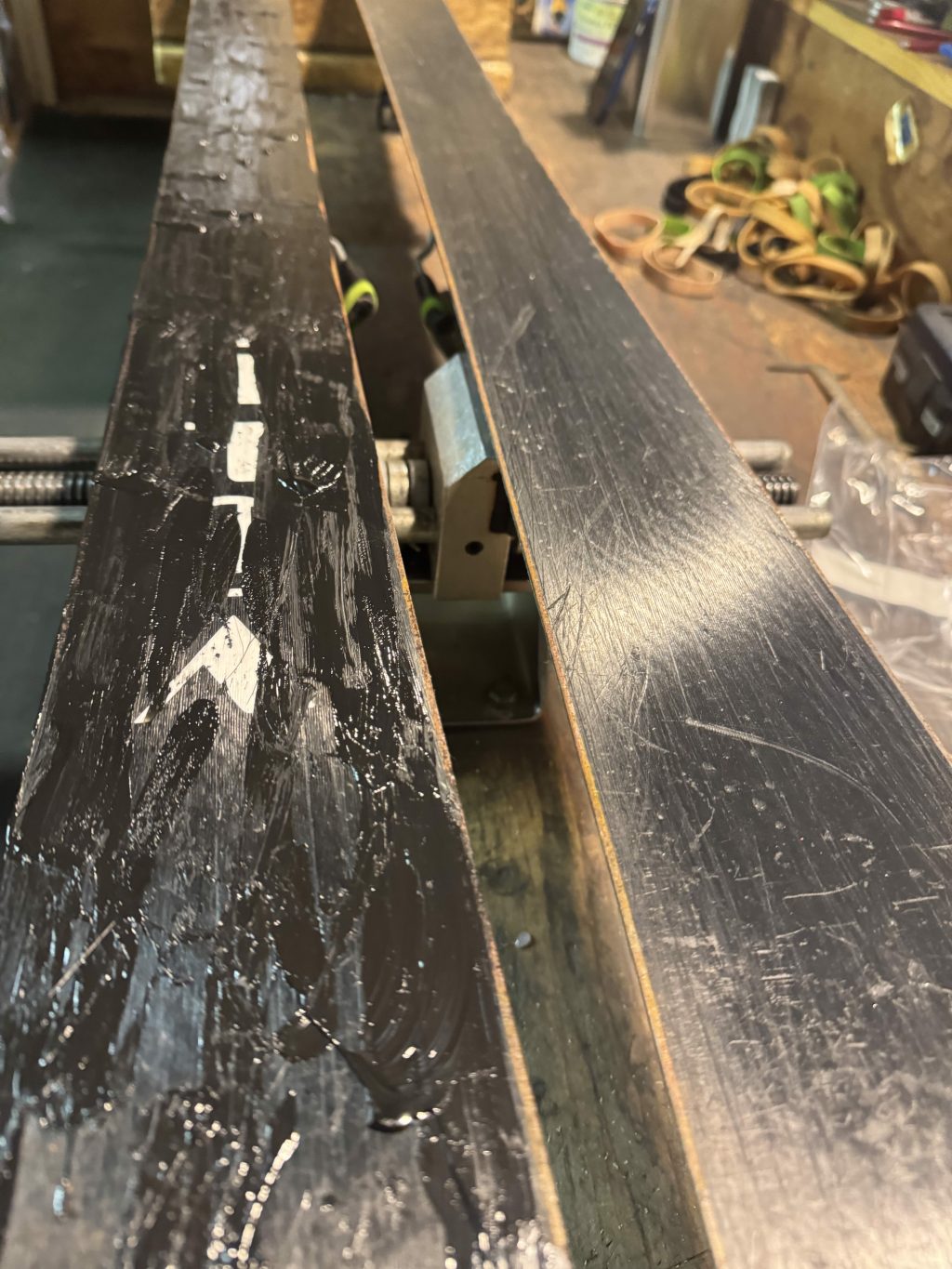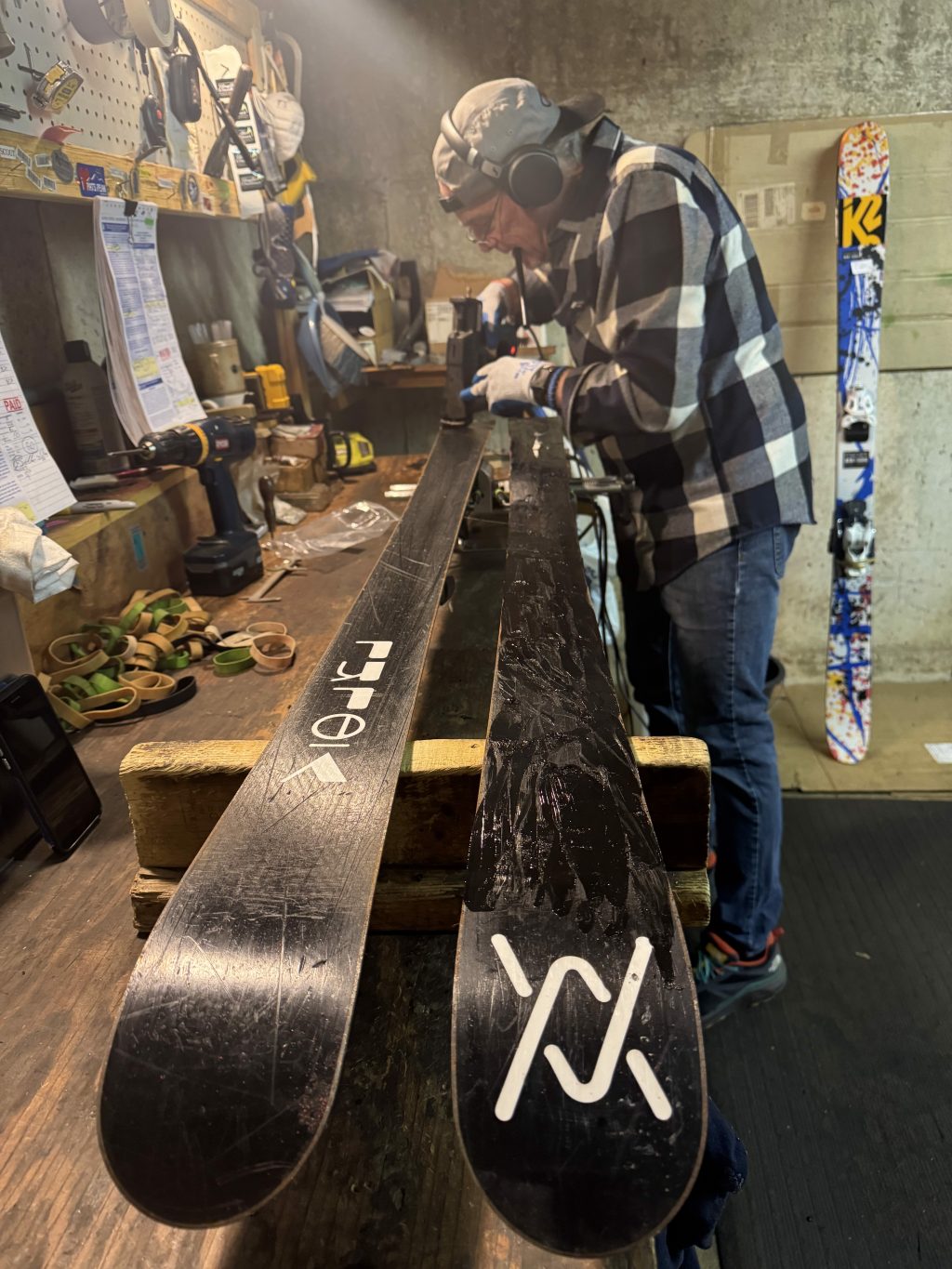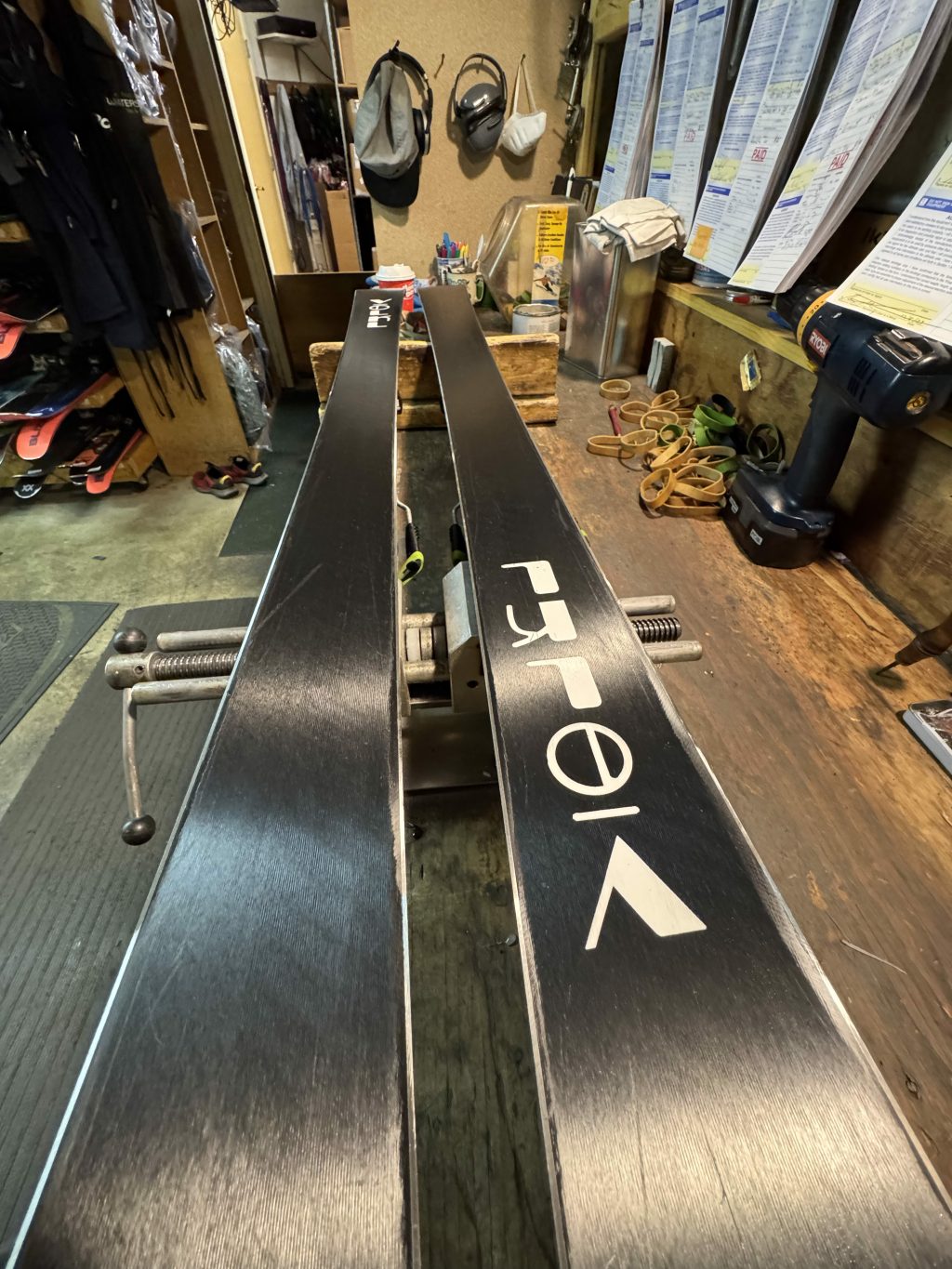I find something relaxing about the smell of melting ski wax and the process of scraping and buffing the bottom of my skis. I also find it reassuring to know that I’ve taken care of my equipment when hitting the slopes. While I enjoy tuning my skis at home, there are some occasions when it pays to bring your skis into the shop and let a trained professional do the work for you. Trust me—the past few winters, I’ve tuned over 1,000 sets of skis a season for my local shop.
To many skiers, a professional tune is a bit of a dark art, but it’s really a straightforward process that helps maximize the performance and lifespan of skis.

Before Bringing Your Skis to the Shop
Give your skis an inspection from tip to tail and assess their overall condition before bringing them in for a tune. Are the edges just dull and/or rusty? Does the base only need a wax or does it need a gouge or core shot repaired? Do your bindings fit your skis? Are the bindings missing any parts? If your ski gear is in really grim condition or getting kind of old, ask yourself if it’s worth rehabbing or if it is time for an upgrade.

What a Professional Ski Tune Entails
I’ve been a ski tech for a number of years now. While every ski shop has its own methods, almost every ski tune has the same common characteristics.
Inspection
Before doing any work, a ski shop is going to inspect your skis. This is similar to what you did before bringing your skis to the shop, but with a more critical eye and providing an analysis of what work the skis need and how much it will cost. Once again, if your skis need a lot of labor or are getting on in years, weigh the cost of a tune against the expense of a new setup.
Check Bindings
The purpose of a binding check is to ensure your ski stays attached when you want it attached and detaches when you want it to detach, like if you fall. There are three components to a binding check:
- Confirm your ski boots fit properly
- Verify that the bindings release when appropriate
- Ensure the ski brakes engage when the binding releases
In addition to being an important part of a professional ski tune, there are a handful of other times you’ll want to have your bindings checked. For example, if you’ve got new boots, it’s likely they don’t have the same sole length as your old ones and the binding will require adjustment. Other reasons to have your bindings inspected include whether your skiing ability has significantly improved or diminished since your last time on the slopes and if you gained or lost a substantial amount of weight.
Base Repairs
After making sure your bindings are in proper working order, the ski shop will turn its attention to the bases of your skis. Any gouges or deep cracks are filled with Ptex and core shots are poly-welded to deliver long-lasting performance.
Base Grind
With any major damage on the bottom of your ski repaired, the next step is a base grind to remove any excess Ptex and flatten their bases. Skis come from the factory with a flat base, but over time, rolling onto your edges lifts the middle of the ski higher than its edges. This is bad for both the performance and life of your skis, and the longer you wait to get a professional tune, the more material the shop needs to remove to make the base flat—a pretty convincing reason to bring your skis to a pro, if you ask me.

Sharpen Edges
The edges of your skis play a vital role in their performance and untended edges can ruin a tune. Ski edges are ground to remove rust and burrs and restored to the appropriate bevel levels—most commonly, skis are given a 1° edge and fine-tuned in the structure phase.
Pro tip: Home edge sharpening and repair is a common practice, but take care when doing so. It’s very difficult to create a consistent edge by hand, which can require a ski tech to grind off additional material to restore a 1° edge and ultimately shorten the life of your skis.
Structure
Structure is the pattern cut into the base of your skis that helps wick moisture when sliding on snow to optimize acceleration and stability. Think of structure like the tread of a tire: the pattern is matched to the conditions it’s used in, kind of like swapping out all-season tires for snow tires before winter. Most skis leave the shop with an all-season structure.
Ski structure repair and optimization is performed with a stone grind or using a specialized Wintersteiger machine which employs a diamond stone to ensure the base is flat, provides a precise finish, and can adjust the edges of the ski to match the snow conditions better.
De-Tune Tips
It might sound strange that a step of a professional ski tune is de-tuning, but it is. While you want your skis to have sharp edges, dulling the edge at the tip and tail of your skis with a gummy stone keeps them from grabbing when you initiate turns.
Wax and Polish the Bases
Wax hydrates the base of your skis, helps them efficiently glide on snow, and increases their durability. The more frequently you wax your skis, the longer they’ll last. There’s an abundance of waxes available for seemingly every snow condition. Unless otherwise directed, most shops use a wax appropriate for the conditions their customers are likely to encounter.
Pro tip: Waxing your skis at home is relatively easy and requires minimal kit—just a waxing iron, scraper, two brushes, and wax. Get in the habit of waxing your skis after every couple of visits to the slopes to increase their performance and life.

In Tune with Your Skis
In the end, the better you treat your skis, the better they’ll treat you. Store them properly when not in use, provide regular maintenance, and put them in the capable hands of a reputable ski shop to keep them operating their best and delivering lasting smiles.
Luke Foley
Luke Foley is passionate about discovering and sharing hidden local treasures and has long been a New England adventure enthusiast. After all, there are only a few places where you can skin for fresh tracks in the morning and have a sunset surf session on the same day.




